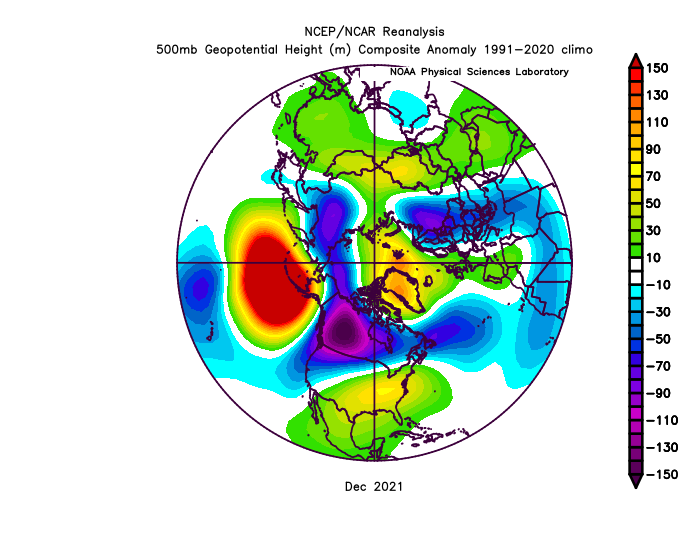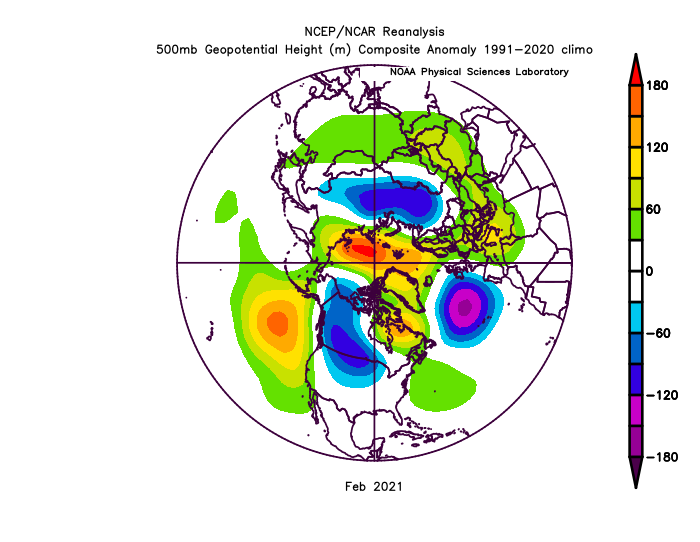-
Posts
90,955 -
Joined
-
Last visited
Content Type
Profiles
Blogs
Forums
American Weather
Media Demo
Store
Gallery
Everything posted by ORH_wxman
-
On 8/29, NSIDC SIA was 3.50 million sq km....this actually drops it below the 2009, 2013, and 2014 minimums which I had speculated was likely earlier in this thread based on what the outstanding remaining ice looked like. The next question is whether it can drop below 2018's minimum of 3.23 million sq km (I think this is still unlikely due to the low concentration near the pole which will start to refreeze in the next 5-7 days). Here's how other post-2007 years compared on the same date: 2021: -240k 2020: -790k 2019: -520k 2018: -70k 2017: -340k 2016: -780k 2015: -150k 2014: +260k 2013: +340k 2012: -1.05 million (-1050k) 2011: -380k 2010: -230k 2009: +240k 2008: -170k 2007: -340k
-
Some of the disconnect about the younger versions of ourselves reading about disasters of yore and now is that we’re also way better equipped to handle them in many places. Like for example, ORH is never going to see another 1955 flood again due to the drainage and flood control systems put into place after that one. Tornado warnings are way better now and NWP guidance is much better now which reduces the risk of 1978-style traffic disasters. That acts as a mitigating effect on the weather disaster itself even if extreme heavy rainfall events or extreme droughts are more frequent than they were 50-100 years ago. Of course, on the flip side, we keep building really expensive homes and infrastructure in areas that are vulnerable to storm surges in hurricanes, nor Easters, etc. But that’s more of a human decision-making problem.
-
One of the main reasons I’ve never really imbibed in wx Twitter…
-
It’s been like pulling teeth in recent years to get it to bleed over the top and southward. We sort of got that in 2018-19…but there was a definite gradient with NNE being much more wintry that season. Unfavorable Atlantic hasn’t helped in recent seasons
-
Pretty soon you’ll have no seasonal variability except for precip like the Amazon.
-
Stein killed my garden weeks ago.
-
Still can't believe CON got 3 consecutive record lows in September 2020. That month has been the hardest to get record lows the past couple decades.
-
Yeah I believe that is ORH's greatest daily departure for any day of the year....and I think the next closest departure is like 3F lower than that +36.
-
12/29/84 too....ORH actually hit 70F. I think lots of mid-70s in lower elevations. I think that warm spell was a little muted (relative to climo) in NNE, but it was ridiculous in SNE.
-
Yeah a few pockets have avoided regression but I’d say a majority of SNE has regressed a decent amount in the past 4-5 seasons or so. Some select areas you could maybe argue started regressing a bit before that…like after 2010-2011. Peeps in western zones haven’t had a lot of luck since then after getting smoked over and over again for basically a decade between ‘00-01 and ‘10-11. They were mostly too far west for the real big dogs (like Feb ‘13, Jan ‘15, Feb ‘15, Jan ‘18, 2nd Mar ‘18 storm, Jan ‘22) and didn’t really make up for it with enough other conventional warning events. Throw in what might have been an all time epic ratter in the Berkshires and S VT in 2015-16 and you have a solid case that they are ready to flip the script a bit.
-
Yeah first 6-8 weeks of winter can be “helped” out by the warm SSTs since you will have cold shots over the land but the contrast to the warm SSTs will be greater than normal. It makes rapidly bombing storms a bit more likely…you still obviously need the synoptic setup first.
-
NAO block prob could have been a little further south ala 1970, but yeah, it would have been just fine if we didn't have that ridiculous trough on the west coast. But oh well....can't win 'em all. We've had a lot of good fortune in the past 20+ years so we have been paying that back a little in the form of getting punished on a lot of nuances in the pattern in the most recent 3-4 winters. We're prob due for some legit cold outbreaks too....they've all been centered way to our west recently. Scott and I were discussing earlier in this thread how it's been pretty cold in the plains and Canada in recent winters but not in the northeast.
-
I've only seen the Euro seasonal....got any others to post? Euro seasonal didn't look too El Nino-ish since it had the big Aleutian ridge....though it was kind of weird in that had it also had higher heights on the west coast. But Aleutian ridge + SE ridge looked Nina-ish.
-
Update: On 8/24, NSIDC SIA was 3.76 million sq km. Here's how other post-2007 years compared on the same date: 2021: -300k 2020: -1.01 million (-1010k) 2019: -890k 2018: -140k 2017: -450k 2016: -870k 2015: -200k 2014: +350k 2013: +130k 2012: -1.09 million (-1090k) 2011: -730k 2010: -90k 2009: +100k 2008: -320k 2007: -710k
-
First 10-12 days of the month were just a full-on blowtorch.....then we kind of got into that semi-colder pattern.....SE ridge was just a shade too robust and that was prob a direct result of the PNA being so deep out west. 1970 had a more favorable NAO to keep it cold too. Displaced like 500+ miles south of where 2021 was.
-
I didn't think December 2021 was that far off from being really good. The 2nd half of the month actually had a pattern similar to Dec 1970....but just a shade more -PNA and confluence up by us which ended up being all the difference. You could see how this pattern would be good though. You have a SE ridge but also -NAO And 50/50 low for confluence to hold in the highs near CAR on SWFE.....in our case though, we just couldn't get any of those disturbances to maintain their integrity in the flow.
-
First true weather-related all-nighter was March 2001 storm.....I had come close in Dec 1996 and Apr 1997, but didn't make it. Prob went to sleep around 3am for both. Don't think I've pulled an all nighter since the Feb 2013 blizzard though. I've done plenty of alarms at 2-3am since then though (most notable was setting the alarm for 3/4/19....and was rewarded with seeing 4-5" per hour stuff).
-
If the 1/17 storm doesn't take an absolutely ridiculous phased turn due north (or almost NNW), then January probably goes down as a big dog month. That was definitely unfortunate since about 90% of the analog patterns produced a KU type event for New England. Assuming a good storm on 1/17, we would have had the 1/7 event, 1/17, and then the blizzard at the end of the month. Changes the whole tenure of the month (and probably winter)....as you;d have a month of deep snow cover with minimal thaw.
-
An example where the CPC metric seems a bit fraudulent. I do remember that Davis Strait block too which helped out in the Feb 1-2, 2021 firehose storm.
-
At ORH, those 9 Februarys averaged 24.0" with a median of 20.6".....longterm average for February at ORH is 17.1".....so it was prolific down this way as well. January has really been the more recent turd in the punchbowl for around here with 5 out of the last 7 below normal snowfall in ORH...and the two that were not below normal had massive cutters that ruined the overall feel of the month.
-
It's comparing both to the 1991-2020 climo but that is irrelevant when they are subtracting the anomalies from eachother since the '91-'20 portion of the subtracts itself out to zero and you are left with 2021 compared to 1951-2010 as the only remaining difference.
-
Make sure you have August as your base period https://apps.ecmwf.int/webapps/opencharts/products/seasonal_system5_standard_z500?area=GLOB&base_time=202208010000&stats=ensm&valid_time=202209010000 Then it should go out to DJF.
-
Yeah its hard to analyze it when it's spitting out conflicting patterns....rarely gonna get a fat monster W ATL ridge without a deeper trough somewhere to the west.
-
-
With more data available than ever before, rigorous statistical analysis is imperative, and many statisticians will tell you that there has been a degradation of using data properly...even in published literature. You gotta watch for p-hacking and other incorrect use of data and it's not easy to do if you aren't actively looking for it all the time. Even in very informal settings like on this forum, we will often use metrics and methods that are not very useful for comparing datasets. The one I probably mention the most as being flawed is "percent of average snowfall"...usually powderfreak and I make the comments on it. Comparing different locations using that metric is worthless by itself since different areas will have different season to season variance. It's not that weird to get 200% of mean snowfall in the mid-atlantic but it just does not happen in northern new england (or even parts of interior SNE....like ORH). So we need to normalize the datasets by using standard deviations, but using Stdev isn't very popular since most people aren't familiar with it outside of maybe learning about it in math class one time eons ago.








